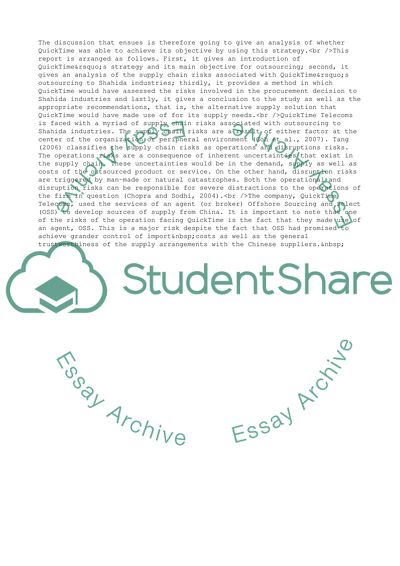Cite this document
(Quicktime Telecoms Case Study Example | Topics and Well Written Essays - 2250 words, n.d.)
Quicktime Telecoms Case Study Example | Topics and Well Written Essays - 2250 words. https://studentshare.org/management/1880976-operations-management-supply-chain-case-study-report
Quicktime Telecoms Case Study Example | Topics and Well Written Essays - 2250 words. https://studentshare.org/management/1880976-operations-management-supply-chain-case-study-report
(Quicktime Telecoms Case Study Example | Topics and Well Written Essays - 2250 Words)
Quicktime Telecoms Case Study Example | Topics and Well Written Essays - 2250 Words. https://studentshare.org/management/1880976-operations-management-supply-chain-case-study-report.
Quicktime Telecoms Case Study Example | Topics and Well Written Essays - 2250 Words. https://studentshare.org/management/1880976-operations-management-supply-chain-case-study-report.
“Quicktime Telecoms Case Study Example | Topics and Well Written Essays - 2250 Words”. https://studentshare.org/management/1880976-operations-management-supply-chain-case-study-report.


